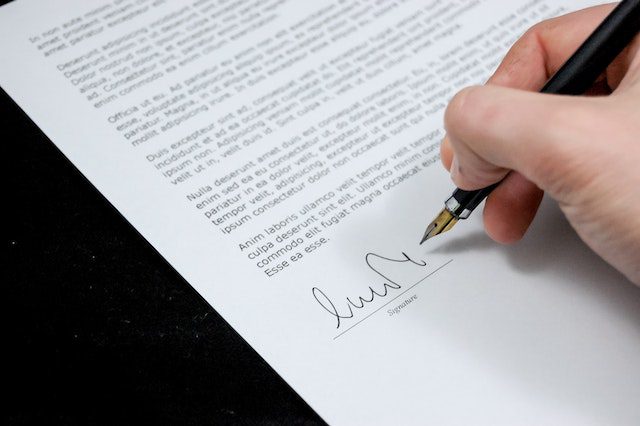
A scholarship motivation letter is the key that can unlock your dreams of higher education. It’s a chance for students to showcase their knowledge and passion even before a face-to-face interview, making it an essential part of the application process.
Think of the motivation letter as your cover letter for certain applications. While it might not be required everywhere, when it is, it becomes absolutely crucial. Thankfully, some universities, like the IU International University of Applied Sciences, don’t demand motivation letters, making it easier for some applicants.
Speaking of IU, they offer incredible scholarships, covering up to 75% of tuition fees, for students in high-demand fields such as Computer Science, Information Science, Artificial Intelligence, Big Data, Finance, Accounting, and more. They’ve already awarded over 4,000 scholarships to students from all corners of the globe.
The mission of IU International University of Applied Sciences is to provide education to as many people as possible, irrespective of their circumstances. The past couple of years have motivated countless individuals to seek a change in their lives, whether it’s diving into a whole new field or advancing in their current careers.
IU holds values of equality, diversity, and inclusion at its core, which is why scholarships are offered each year to deserving students. They firmly believe that education can come in various forms, all sharing the belief that anything is achievable.
Wondering if you can apply for a scholarship without a motivation letter? IU has got you covered with scholarship opportunities of up to 75%. For more details on this fantastic offer, visit the IU website now.
In this comprehensive guide, aspiring students will gain insights into the format of a motivation letter for scholarships and even for Ph.D. programs. Additionally, there’s a step-by-step walkthrough on crafting a compelling Letter of Motivation for a scholarship application.
Scholarships are a lifeline for students, enabling them to pursue their education without the burden of financial constraints. And there’s no need to let your financial situation stand in the way of your dreams.
If you have incredible potential to offer a school you’re applying to, take a leap and apply for a scholarship opportunity right away. A power-packed scholarship application letter is your ticket to success.
This article is your go-to resource for learning how to write a winning motivation letter for a scholarship. Plus, you’ll find seven inspiring motivation letter examples that will guide you through crafting your very own.
Scroll through the table of contents below to explore all the invaluable information packed in this article. Get ready to seize your scholarship dream!
Table of Contents.
- What is a motivation letter?
- What is the Letter of Motivation for the Scholarship Format?
- Tips on how to write a motivation letter for a scholarship
- How do I write a motivation letter for a scholarship application?
- Step 1: Identify a problem
- Step 2: Propose the solution.
- Step 3: Close with confidence
- How to channel your motivation letter to fit the scholarship
- What NOT to include when writing a motivation letter for a scholarship
- Motivation letter or scholarship request – General guidelines
- Why do I need a motivation letter for the CSC scholarship?
- Motivation letter for undergraduate scholarships
- Motivation letter for your Ph.D. Application
- Killer Scholarship Motivation Letter Examples
- 1. Letter of Motivation for University Scholarships vs.
- 2. What kind of scholarship are you asking for?
- 3. Start with brainstorming.
- 4. Write your Scholarship Motivation Letter in an Easy to Read Format.
- 5. Be as precise as possible
- 6. Show proof, don’t tell.
- 7. Read what you have written
- Template to write a motivation letter for scholarships
- Common Mistakes to Avoid When Writing a Scholarship Motivation Letter
- A Sample Scholarship Motivation Letter
- To complete
- Frequently Asked Questions Scholarship Motivation Letter
What is a Motivation Letter?

Image source: Pexels
Crafting the Perfect Motivation Letter: Your Ticket to Success!
Imagine a one-page document that introduces you to potential employers, scholarship committees, or admissions officers and convinces them to delve deeper into your qualifications. That’s the power of a motivation letter!
When applying for a job or seeking a scholarship opportunity, attaching a motivation letter along with your resume is customary. This letter acts as your personal pitch, capturing the attention of decision-makers and compelling them to explore your application further.
Here’s a valuable tip: keep your motivation letter concise and limit it to one page, unless specified otherwise. Research shows that interviewers, admissions officers, and hiring managers spend an average of just 20 seconds on each cover letter. With such a brief window to make an impression, simplicity is key.
While you can find cover letter samples online to guide you, it’s crucial to tailor your letter to each specific opportunity. Recruiters and managers want to see that you genuinely care about their job or business. Beware of using templates or guides that result in a cookie-cutter approach. Word-for-word copying gives the impression that you’re applying indiscriminately, raising red flags for the discerning reader.
Remember, your motivation letter is your golden chance to showcase your skills and secure a job or scholarship. It’s your opportunity to shine, highlighting your strengths and presenting yourself as an enthusiastic and capable candidate.
So, get ready to craft a winning motivation letter that sets you apart from the competition. Show them why you’re the ideal fit, and let your motivation soar to new heights!
What is the Letter of Motivation for the Scholarship Format?
When applying for a scholarship, it’s essential to include a motivation letter that highlights your academic accomplishments and sets you apart from the competition.
In your motivation letter, you need to answer two crucial questions: Why are you the perfect candidate? How will your skills and abilities contribute to the university or the country?
Demonstrating a genuine thirst for knowledge and a commitment to making valuable contributions is vital.
To ensure your motivation letter follows the right format, consider including these seven key elements:
- Your name and contact details: Make it easy for them to reach out to you.
- The name and address of the company or university you’re applying to: Provide the necessary context.
- The date: Give your letter a sense of timeliness.
- Dear Sir/Madam (or the specific person, manager, or hiring manager if known): Address the letter appropriately and professionally.
- The body of the letter: This is where you lay out your motivations, experiences, and aspirations in a clear and persuasive manner.
- Recognition and dismissal: Wrap up your letter by expressing gratitude for the opportunity and expressing your anticipation of a positive response.
- Signature (handwritten): Add a personal touch with your signature.
Remember, this is your chance to make a lasting impression. Craft a motivation letter that showcases your passion, drive, and potential to excel. With the right approach, you’ll be one step closer to unlocking the scholarship of your dreams.
Tips on how to write a motivation letter for a Scholarship
Crafting a Winning Motivation Letter: Essential Tips to Follow
When it comes to writing a motivation letter, it’s not just something you do casually. There are specific tips and tricks that can help you create a standout scholarship motivation letter. Let’s dive into them:
- Professionalism: Remember, this is a professional piece of writing that can shape your future. Treat it with the importance it deserves. Your letter should follow a business format that aligns with your scholarship aspirations.
- Investigation: Take the time to research the university or program that interests you. Incorporate some of the information you gather into your cover letter. Demonstrating your knowledge and interest will impress the readers and show your dedication.
- Advertise Yourself: Sit down and reflect on what makes you unique. Why should you be accepted? Highlight your ability to learn quickly and work hard. Share your strong work ethic and positive mindset. Provide examples of how you’ve contributed, such as volunteering at church. Remember, admissions offices review numerous letters, so make sure yours stands out.
- First Preview: Before writing the first draft of your cover letter, create a detailed plan. Include the research section and the list of qualities that make you unique. Additionally, address essential questions specific to your cover letter. These questions are commonly asked and should be answered effectively.
- Relax: Take a breather after completing your first draft. Enjoy a cup of tea, listen to some music, and temporarily step away from writing. This break will help you reset and refocus. It’s essential to take short breaks every thirty minutes to an hour of work to avoid writer’s block.
- Preview Your Letter: No one gets the perfect draft on the first try. Take the time to review your letter multiple times. Ensure it looks professional and is easy to read. Use a universally accepted font like Times New Roman, Calibri, or Arial. Avoid using a font size smaller than 12. Make sure your letter fits on one page unless otherwise specified. A concise, well-organized letter is easier for readers to digest.
Remember, writing a cover letter or letter of interest is highly recommended by experts in the field. By following these tips, you’ll be on your way to creating a powerful motivation letter that captures your attention and increases your chances of success.
How do I write a motivation letter for a scholarship application?
Writing an Impressive Scholarship Motivation Letter: Simple Steps for Success
Crafting a compelling motivation letter for a scholarship can be a daunting task for many students. But fear not! Here are two effective ways to structure your letter:
- Three-Paragraph Structure: You can organize your motivation letter into three sections: introduction, body, and conclusion. Each paragraph serves a specific purpose, allowing you to present your case effectively.
- Seven-Paragraph Structure: Alternatively, you can opt for a more detailed approach. Divide your letter into seven paragraphs, with each paragraph containing around three concise sentences. This format enables you to provide clear and specific information about the position you’re applying for.
Regardless of the structure you choose, the following three steps will guide and focus your letter:
- Introduction: Begin by introducing yourself and stating your purpose for writing the motivation letter. Grab the reader’s attention with a strong opening that highlights your enthusiasm and interest in the scholarship opportunity.
- Body: This is where you showcase your qualifications, skills, and experiences that make you an ideal candidate. Highlight relevant academic achievements, extracurricular activities, and any other accomplishments that demonstrate your dedication and potential. Be sure to align these details with the requirements and goals of the scholarship.
- Conclusion: Wrap up your motivation letter with a concise and impactful closing paragraph. Reiterate your strong interest in the scholarship and express gratitude for the opportunity to be considered. End on a confident note, expressing your enthusiasm for a potential interview.
By following these three steps, you’ll enhance your chances of securing an interview and stand out among other applicants. Remember, a well-crafted motivation letter can make all the difference in securing the scholarship you desire.
Step 1: Identify a problem
It is essential that the recruiter, the company, or the admissions office feel very important. Please identify one or all of the following issues before writing your motivation letter.
Find the school to which you are applying. Find out why they are offering scholarships. What problem is the company facing? What are they trying to fix by filling the position? Knowing this information allows you to express your knowledge of the problem and immediately attract the attention of the recruiter and the reader.
Step 2: Propose the solution.
No matter what challenge you discover, the answer to your problem is always the same. And this answer is and must be YOU. Explaining why you are the solution to your current problem is the most effective way to get selected or assigned to the position.
List as much relevant information as you can think of—your skills, achievements, and all of your education—that tells you that you are the right candidate. Tell them what you would accomplish if you were awarded the scholarship.
Step 3: Close with confidence
Until then, you have shown passion and hard work. Now you should finish your motivation letter with confidence.
Imagine a motivation letter as your secret weapon, a companion to your application and CV. It’s like a cover letter that gives you the chance to showcase your worth. So, what’s the purpose of this letter? Let’s break it down:
- Highlighting Your Excellence: This letter allows you to demonstrate why you’re an exceptional candidate for the scholarship. It’s your chance to shine and show the review committee why you deserve their attention.
- Sharing Your Aspirations: Express what you plan to achieve with the training you’ll receive through the scholarship. This is your opportunity to paint a vivid picture of your goals and dreams, revealing how the scholarship will empower you to make a difference.
- Catching the Committee’s Eye: Review committees often rely on motivation letters to narrow down their candidate pool. And guess what? Some specialized programs at the undergraduate level may require you to submit one too.
So, if you have the chance to include a motivation letter with your scholarship application, seize it with both hands. It might just be your golden opportunity to captivate the review committee and leave an unforgettable impression. Remember, this letter holds immense potential to propel you toward your dreams.
How to channel your motivation letter to fit the scholarship
A cover letter should link your plans to the objectives of the award. How do you benefit from continuing education in this area? How will you use this knowledge to support the mission of the Fellowship? Let’s say the scholarship comes from an organization dedicated to wildlife conservation.
The letter should explain how you want to use your training for a career in this field. You will also need to understand why this app should earn more than other candidates.
What specific experiences do you have that set you apart from others? What detailed plans do you have to deal with a current problem in the world? Even if you currently have limited knowledge of the problem, use it to your advantage. Explain how you can succeed with more education and solve more problems in the future.
What NOT to include when writing a motivation letter for a scholarship
Your scholarship motivation letter should be well-written and free of grammatical or spelling errors.
Use a professional tone and advanced writing (no familiar language). Give specific examples from your past, present, and future.
Avoid vague generalizations. indeterminacy indicates a lack of care or knowledge, which is not impressive to a scholarship review committee.
Motivation letter or scholarship request – General guidelines
Most applications will not specify how long your motivation letter should be. You will need to use your initiative to write a concise motivation letter. The letter must include the following:
- The most important elements of your resume.
- your education
- An introduction indicating which program you are applying for
- Information about your academic background.
- Why do you want to do a PhD?
- The potential impact of your proposed research
- Your future career plans.
- Your professional experiences and plans for the future.
Note: Motivation letters usually range between 500 and 1,000 words. Just like the standard 500-word essay, you should break it into paragraphs as you write so that you can read it easily.
Why do I need a motivation letter for the CSC scholarship?
The motivation Letter for the CSC scholarship application helps to convince a Chinese university professor to provide you with an acceptance letter.
A motivation letter introduces you to the professor who may accept you to work in his laboratory. Therefore, it is necessary to write your Motivation Letter carefully and fill in all the necessary details in your Motivation Letter to impress the teacher.
A motivation letter is recommended when applying for a CSC scholarship because it outlines your educational plan, goals, and mission. Before writing a motivation, you must first secure admission to your chosen university.
Motivation letter for undergraduate scholarships
A motivation letter for an undergraduate scholarship can make or break your application for university studies. It is required for every scholarship application and should illustrate to the selection panel what sets you apart from other applicants.
Your job in a motivation letter is to convince the panel that you can complete the studies for which you will get financial aid.

Donors usually do not have specific requirements when it comes to motivation letter design for undergraduate scholarships, which makes it even more difficult to compete with other applicants. However, any good motivation letter for a scholarship should include the following:
– Information about your educational achievements;
– About your experience and professional endeavors;
– Information about your financial situation and how this scholarship would benefit your studies/career.
Motivation letter for your Ph.D. Application
When applying for a Ph.D. , you will have to write a research proposal and a motivation letter. This letter describes why you want to pursue a doctorate. and why you would be well prepared to investigate the proposed topic.
But what should go in this letter and what tone is appropriate for it? To give you some ideas, we share a sample motivation letter for a Ph.D. scholarship so you can see what your letter should contain.
It is worth mentioning that a European-style motivation letter focuses on your educational background, as opposed to the American-style personal statement, which discusses your life experiences.
A professional motivation letter should describe your previous research experience without giving too much personal information.
To make your request as strong as possible, your letter should include the following essential components.
Killer Scholarship Motivation Letter Examples
Your scholarship motivation letter should stand out if you are to secure a place. After intensive research, we were able to find 7 points to consider if you want your scholarship motivation letter to stand out:
1. Letter of Motivation for University Scholarships vs.
There is a subtle difference between writing a motivation letter for a university and writing a motivation letter for scholarships.
A motivation letter for entering a university explains why you want to study at a university and take a specific course. You must also specify your professional objectives before, during, and after the course.
However, a motivation letter for a scholarship depends solely on the type of scholarship you are applying for.
So, to start writing a motivation letter, first, decide the purpose of the motivation letter before you start writing it. By doing this, you can gain clarity of purpose.
2. What kind of scholarship are you asking for?
Different scholarships have different profiles of the people sought, each with specific objectives. For example:
An academic grant would like to have a notable record of academic achievement in its cover letter, as the goal is to win applications from outstanding students.
A scholarship will be awarded to professionals who present their work experience, past impact on their career goals, and future impact.
Most scholarships aim to attract exceptional candidates for applications that create an impact.
Minority Scholarships will show you how to meet your ethnic needs, and you may need to highlight some of the challenges you’d like to solve in your current setting once you receive the scholarship.
3. Start with brainstorming.
Now that you know who is looking for this scholarship, it’s time to evaluate yourself to see how you compare to the person you want to attract. A brainstorming session is a simple exercise that will help determine if you are eligible for a scholarship.
This can be with you or with a friend/colleague who knows your academic and professional background. Brainstorming can be done through the following questions:
- What course did you apply for?
- Your long-term relationship?
- What makes it unique?
- What have you accomplished so far? (Maybe academic or professional, depending on the type of scholarship)
- What is the relationship between the objectives of the scholarship?
- What are your short and long-term projects to receive after the scholarship?
- How does the scholarship help you carry out these projects?
- What impact will this scholarship have on you and society?
4. Write your Scholarship Motivation Letter in an Easy to Read Format.
One of the most essential tips to keep in mind is to put yourself in the shoes of the person reviewing your application. You need to easily understand who you are, what drives and motivates you, why you stand out from others, and why you deserve to receive a scholarship.
General guidelines regarding structure and format include:
- Make sure your motivation letter has both cohesion and coherence. Each paragraph should deal with a point with a good command of the chosen language.
- Eliminate or reduce typos with proofing tools like grammar. Typos make you feel less stressed. However, we are imperfect, and typographical or grammatical errors may occur after several changes to your letter. Using proofing tools helps you get the digits down.
5. Be as precise as possible
When applying for scholarships, the number of words is almost always limited. Therefore, it is vital that you are on the spot and accurate. One of the reasons motivation letters fail is that the writer is inaccurate and beats the bush unnecessarily.
It is best to ensure that you only provide the relevant information regarding the listed requirements for the replacement.
These are the only details that will be considered. The process requires you to be critical and practical enough.
6. Show proof, don’t tell.
Some common words can be extracted from a cover letter. They understand “motivated”. Head. great worker “It is common for everyone to say that they are motivated and want to change things, so you have to set yourself apart by example because they are motivated, but can you prove it or show it?”
7. Read what you have written
It is essential that writing is done in cycles. After verifying that steps 1 through 6 are complete, you can create the first version of a cover letter. Please read it. Would you be convinced to be awarded a scholarship if you read what you wrote? If not, optimize your app and revise it until you find that what you’ve written is the best and can’t be changed.
Template to write a scholarship Motivation letter
I know you want to apply for multiple scholarships, but you don’t need to write a different motivation letter for each nomination. Develop a template that allows you to tailor content to a specific situation. But how do you do this?
Once you’ve completed the seven steps in the previous section, you now have a template that you can edit to match your cover letter to the application you wish to apply for.
A detailed outline of the motivation letter
A proper scholarship motivation letter format has a minimum of five and a maximum of seven paragraphs.
Most of the scholarship motivation letters in this format are fruitful. To achieve this, you must discuss each point exhaustively in paragraphs.
The following scheme will guide you:
- Add personal and contact details in the header section
- Motivation letter title
- introductory paragraphs
- The story behind your achievements
- A fact of the set of skills acquired
- Propose a summary of relevant objectives
- an execution plan
- Please provide a reason why you are a potential candidate
- To complete
Common Mistakes to Avoid When Writing a Scholarship Motivation Letter r
As we already know, a motivation letter for a scholarship is the most important document to win a scholarship in another country.
The scholarship motivational message is not just about mentioning your desires for new opportunities, but about defending an idea of why you and none of the other candidates should be so capable. Here are some tips to guide you:
1. Fewer words and more facts
It is easy to express your desire to travel or study in a particular country, but it is not easy to express why they should choose you. Many of us want to travel, broaden our vision of the world, improve other languages , and improve our quality of life, but what must you do so that “you” are worthy of this award?
Start replacing phrases like “my dream has always been XYZ” because “my achievements have been…” with “I consider myself the ideal candidate because…” and/or “my work is characterized by…”.
Remember that the prize is not for those who want it the most, but for those who correctly demonstrate that they deserve it.
2. Take ownership and demonstrate deep knowledge
In the previous paragraph, I do not want to say that your wishes are not considered. These are important to the extent that you show that you know what you want and why you deserve it.
3. It matters more what you will do for them
Your reasons should not be limited to the comfort of living in a developed country. Scholarship providers expect you to be genuinely interested in the program of study and the positive impact you will have with what you learn.
Just to be clear: they don’t give a damn if you feel safer, happier, wealthier, or healthier living in the country that offers the scholarship.
The important thing for them is how they intend to return the investment to society. Don’t worry! They don’t want money. Count the contribution you will make in terms of cultural exchange, what you can teach the other students or teachers, the extracurricular clubs you can contribute to, and other cooperative projects you have in mind.
Tip: If the scholarship requires you to return to your country of origin at the end of the study program, it is essential that you mention how you will apply what you intend to learn in your country.
4. The rules are the rules
Finally, limit the motivation letter to what it is and what they ask of you. If they tell you 1 sheet, send a sheet.
Please do not expect the scholarship provider to exempt you from some of the motivation letter requirements.
If they ask you for an IELTS 7, it is a 7, not a 6.5. The same with certified work experience: two years is 24 months and not 22 and a half, etc.
However, it is beautiful to show that you deserve the scholarship and not try to convince them that you have worked hard but cannot meet the other requirements. If you don’t meet, give yourself time because there are always new application dates and scholarship opportunities.
A Sample Scholarship Motivation Letter
Macdonald Walter
9876 Estate
Stillwater, OK 74074The Scholarship Committee123 Learning Rd. Suite 4AAustralia, OK 73127
To whom It May Concern:
My name is Macdonald Walter, a senior at Conevant University. I am currently pursuing a five-year bachelor’s degree in Business Administration and Management, and plan to continue with a one-year master’s degree after graduation.
While in high school, I worked extensively with my big name oil company in the Human Resources department to help build manage their affairs and resources. I am well established in the area of management functions and proper use of resources to achieve a significant result.
I wanted to become a manager to create synergy between the management department and the production unit.
Also, I would like to work with the HR department again, this time as an HR Manager and not lower level staff. I firmly believe in its mission to build “a world where everyone has a decent place to live”.
I appreciate your consideration. With your help, I can continue my studies in Business Administration and Management. to bring affordable housing to those in need.
Carefully,
Writing a motivation letter for a scholarship takes time and commitment. Plan ahead what you are going to write. And give at least three days to write, verify, delete, and edit the letter. This additional time will increase your chances of success with your application.
Frequently Asked Questions Scholarship Motivation Letter
How do I write a motivation letter for a scholarship application?
When it comes to the format of a Letter of Motivation for a scholarship, here’s a breakdown of what it typically includes:
- Your Information: Begin by sharing your name and contact details. Make sure to provide the best way for them to reach you, such as your email address or phone number.
- Recipient’s Details: Mention the name of the company or university you are applying to, along with its address. This shows that you’ve done your research and directed your letter to the right place.
- Date: Don’t forget to include the date when you’re writing the letter. It adds a professional touch and helps with record-keeping.
- Greetings: If you know the name of the person, address them directly (e.g., Dear Mr./Ms. Last Name). If you’re unsure, use a general salutation like “Dear Sir/Madam.” This shows respect and sets a friendly tone.
- Body of the Letter: This is where you express your thoughts and motivations. Share your passion, goals, and reasons why you are an ideal candidate for the scholarship. Be clear, concise, and genuine in your words.
- Closing: Wrap up your letter with a courteous closing. You can use phrases like “Sincerely,” “Kind regards,” or “Yours faithfully” to sign off. Keep it professional and positive.
- Signature: Take a pen and sign your letter with your name. This personal touch adds authenticity to your application.
Remember, while this format provides a general guideline, be sure to check if the scholarship program or organization has any specific requirements or instructions for their motivation letter format. Good luck with your scholarship application!

















